Video: How to insert ear tags into calves correctly
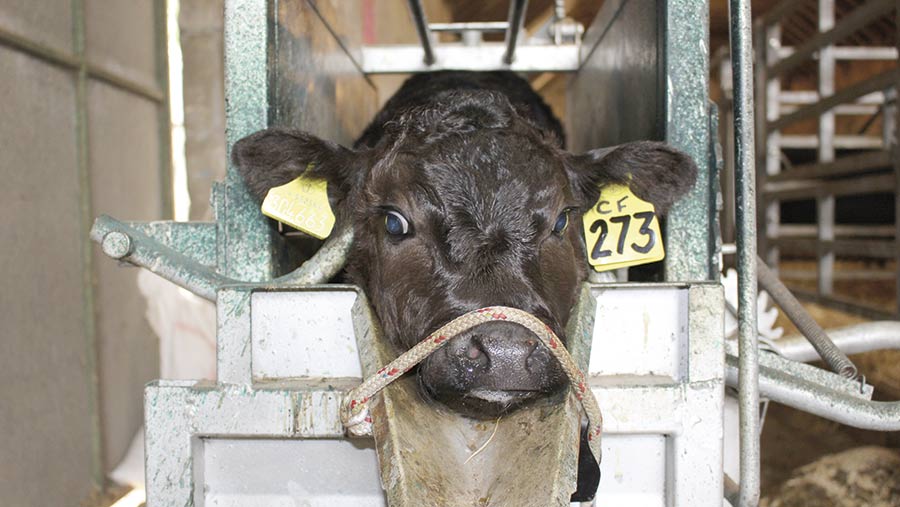
Replacing lost ear tags in cattle could be costing farmers millions of pounds every year, with an estimated annual tag loss in the UK of 10%.
Based on the cattle population in December 2016, which stood at 9.86 million and an average replacement tag cost of £2, the industry could be shelling out £1.97m every year in replacement tags alone.
However, many tag losses could be reduced if they were inserted correctly. Farmers Weekly visited a beef farm to find out how to insert tags correctly.
See also: Ear tags alert to early signs of pneumonia
Step 1: Properly restrain the calf
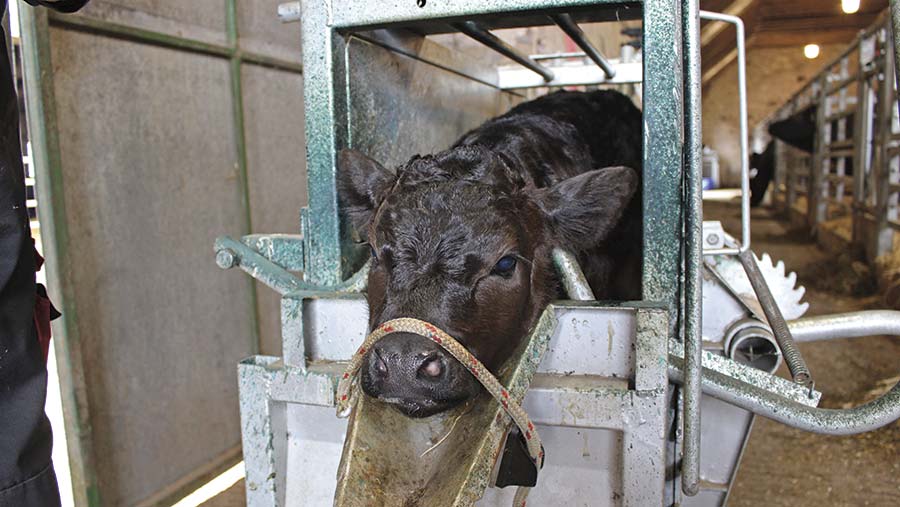
The biggest issue when tagging calves can be properly restraining the animal.
If you are trying to restrain an animal and tag at the same time, while also trying to watch your back for the mother, this is when tags can be administered in the wrong place, or the wrong way round.
Whether tagging inside or outdoors it is worth investing in handling equipment to help restrain the calf and also protect yourself when tagging.
Bits of kits such as the quad crate or calf catcher can fit on to a quad bike to make the job easier for outdoor tagging.
Inside calf crates can be purchased from various manufacturers for several hundred pounds.
Step 2: Get the kit ready
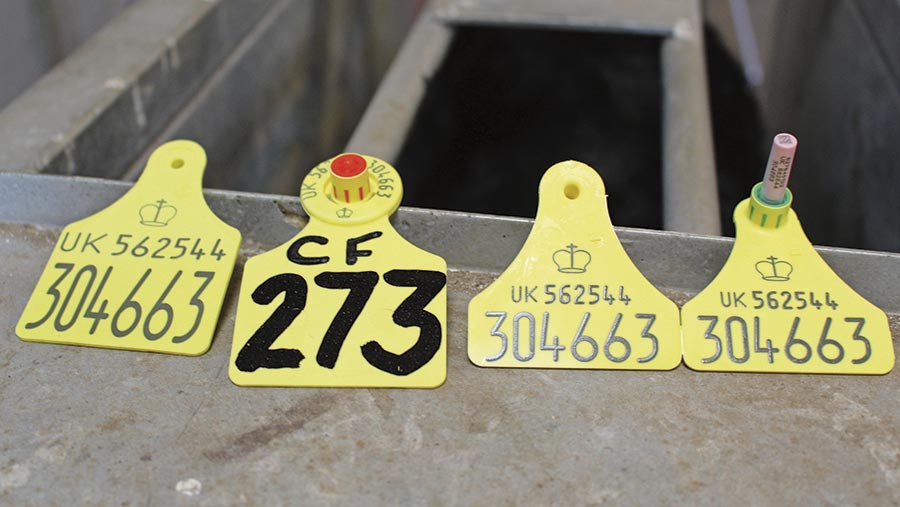
Before tagging calves, it is important to get the tags you are using ready.
It is also important to make sure you are using the correct applicator for the tags, as different tag manufacturers have different applicators.
Cattle must be tagged with a primary and secondary tag.
The primary tag can go in any ear.
They are yellow tags and must be large or medium size so they are easily readable.
The secondary tag must have the same information as the primary tag, but may also contain management information.
This tag must be placed in the opposite ear to the primary tag and can be a large, medium, button or metal tag.
Step 3: Hygiene
Make sure you place the tags on a clean surface and the equipment is clean to avoid any infection.
Hands must also be cleaned prior to application.
Step 4: Inserting the tag into the applicator
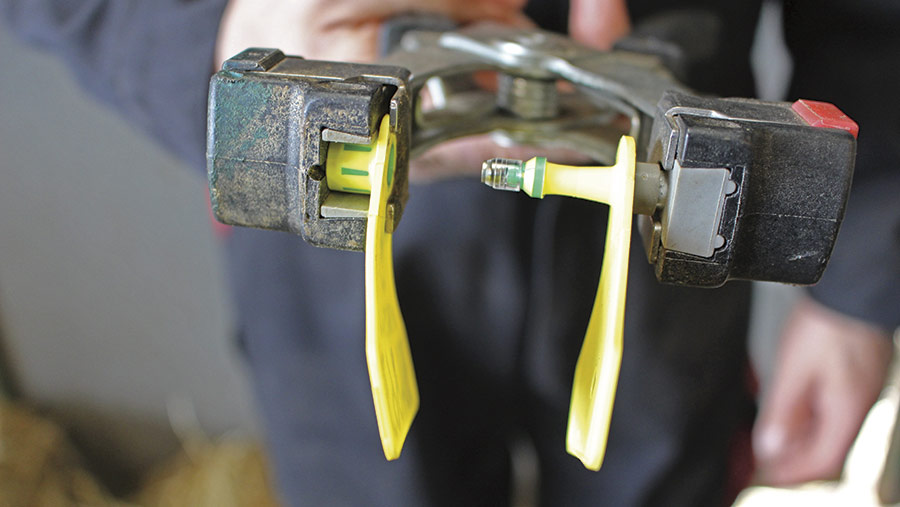
Separate the two halves of the tag (the male and female) and load the male on to the pin of the applicator, pushing it down.
Load the female part under the tongue into the jaw of the applicator.
Make sure the parts line up correctly on the applicator and will lock together when correctly fitted.
Follow individual manufacturers guidelines.
Step 5: Locate where to insert the tag
The tag should be inserted about a quarter of the way along the ear, just above the middle vein.
You should clearly be able to see two large veins in the ear and it must be inserted between the two.
In the case of plastic tags, the female part of the tag should always be on the inside of the ear, this will reduce the chance of the tag snagging or catching on obstructions such as fences, gates and feeding troughs.
The male part of the tag should always enter from the back of the ear.
Once you have located where the tag should go, press the applicator firmly and when the male half loads into the female and you hear a click the tag has been inserted.
Avoid piercing the ridges of cartilage in the middle of the ear, as this could deform the ear and cause infection.
Once inserted rotate the tag to make sure it moves freely.
The same procedure should be repeated for the secondary tag, which must be placed in the opposite ear to the primary tag.
Step 4: Inserting a metal secondary tag
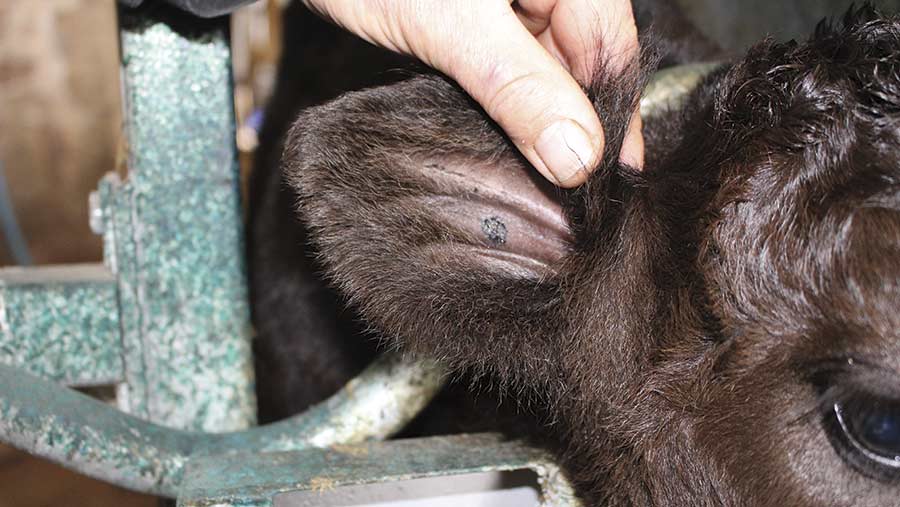
When inserting a metal tag as a secondary tag choose a location at the top of the ear, about a quarter of the way out from the head.
Always ensure that you leave a 5mm space under the fold of the tag to allow for ear growth.
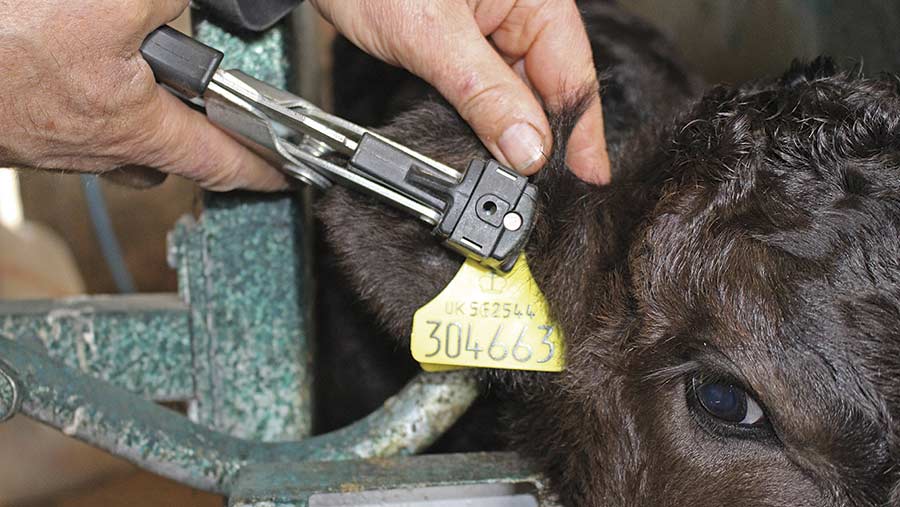
Fit the tag so the “curl lock” is at the front – this will minimise losses due to snagging.
Cattle tagging legislation
- Every newborn calf must have an ear tag in each ear showing the unique ID number. The number is made up of a herd mark and an animal number.
- Dairy farmers – calves must be tagged with one ear tag within 36 hours of birth, 20 days is allowed from birth to fit the secondary tag.
- Beef farmers – have up to 20 days from birth to fit both tags.
- Both tags must be fitted before the animal moves off the holding of birth.
- Replacement tags must be replaced no later than 28 days after it is lost.
